"It sounds like a drum machine instead of a machine playing drums - a sore disappointment": What critics said about the iconic Roland TR-909 drum machine on its release (and how they actually helped define dance music today)
Best of 2023: If they hadn't panned the 909, you might now be dancing to a very different beat…
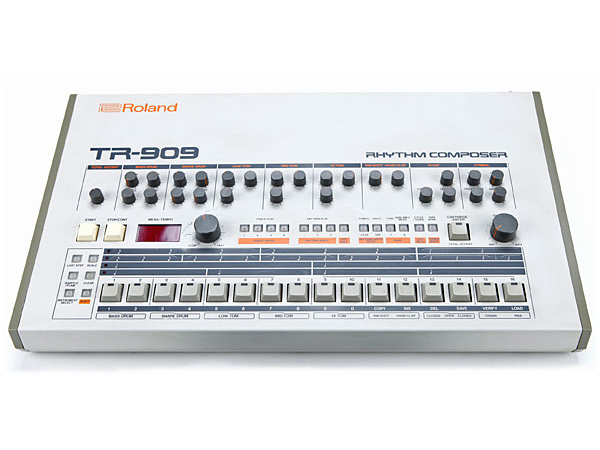
Join us for our traditional look back at the news and features that floated your boat this year.
Best of 2023: The Roland TR-909 drum machine, like other pieces of now iconic Roland gear, was not embraced by the masses when it came out. It received mixed reviews, and like the TB-303 before it, Roland scrapped its production after making just 10,000 units.
Of course, history now sees the 909 in a different light. It has become one of the most sought-after drum machines ever built thanks to its adoption - alongside the TR-808 and aforementioned 303 – by the dance music community.
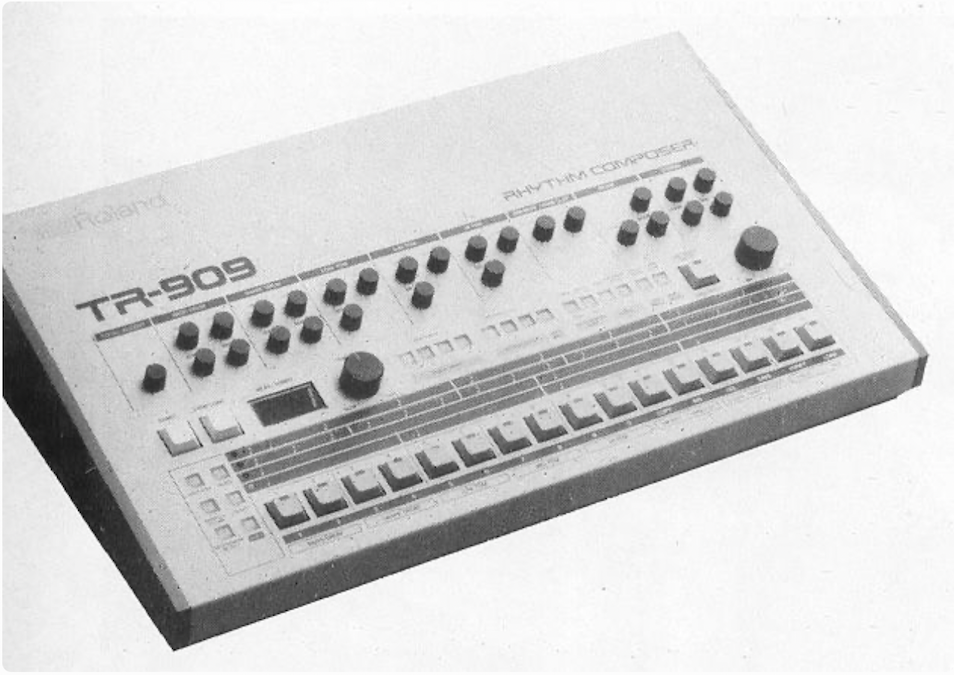
After it was pushed aside by Roland, you could pick a 909 up for peanuts (as opposed to its £999/$1,195 original price) and that's what dance producers did in the late '80s. They sought out cheap, unwanted gear and found out that if you pushed it beyond its initial brief, it could be capable of some speaker-shattering sounds.
Producers like Jeff Mills would adopt the 909 and whole scenes were spawned everywhere, from Chicago to Ibiza, and Detroit to Manchester. Here's Jeff showing exactly why the machine is so good for dance beats (and this really is a very good video).
Now, of course, no DAW or software drum machine is complete without a 909 kit. And Roland has even recognised its own genius and re-released or repackaged the 909 into countless new products, so everyone now realises what a powerful machine it truly was.
No-one could have predicted the impact the 909 would eventually make, but let's see if anyone got close.
So did the reviews get it totally wrong? Did they miss a trick, not realising that this would become an electronic icon? It would be easy for us to look back and point the finger - what were they thinking? - as hindsight is a fantastic thing, but we're not going to do that.
Want all the hottest music and gear news, reviews, deals, features and more, direct to your inbox? Sign up here.
Because actually, in truth, those initial reviews were spot on. What they and some marketing spiel from Roland reveal is that, had the 909 been more successful at replicating 'real' sounds, then it might have been more successful as a product. In which case dance music might be very different today.
Of course, no-one could have predicted the impact the 909 would eventually make, but let's see if anyone got close.
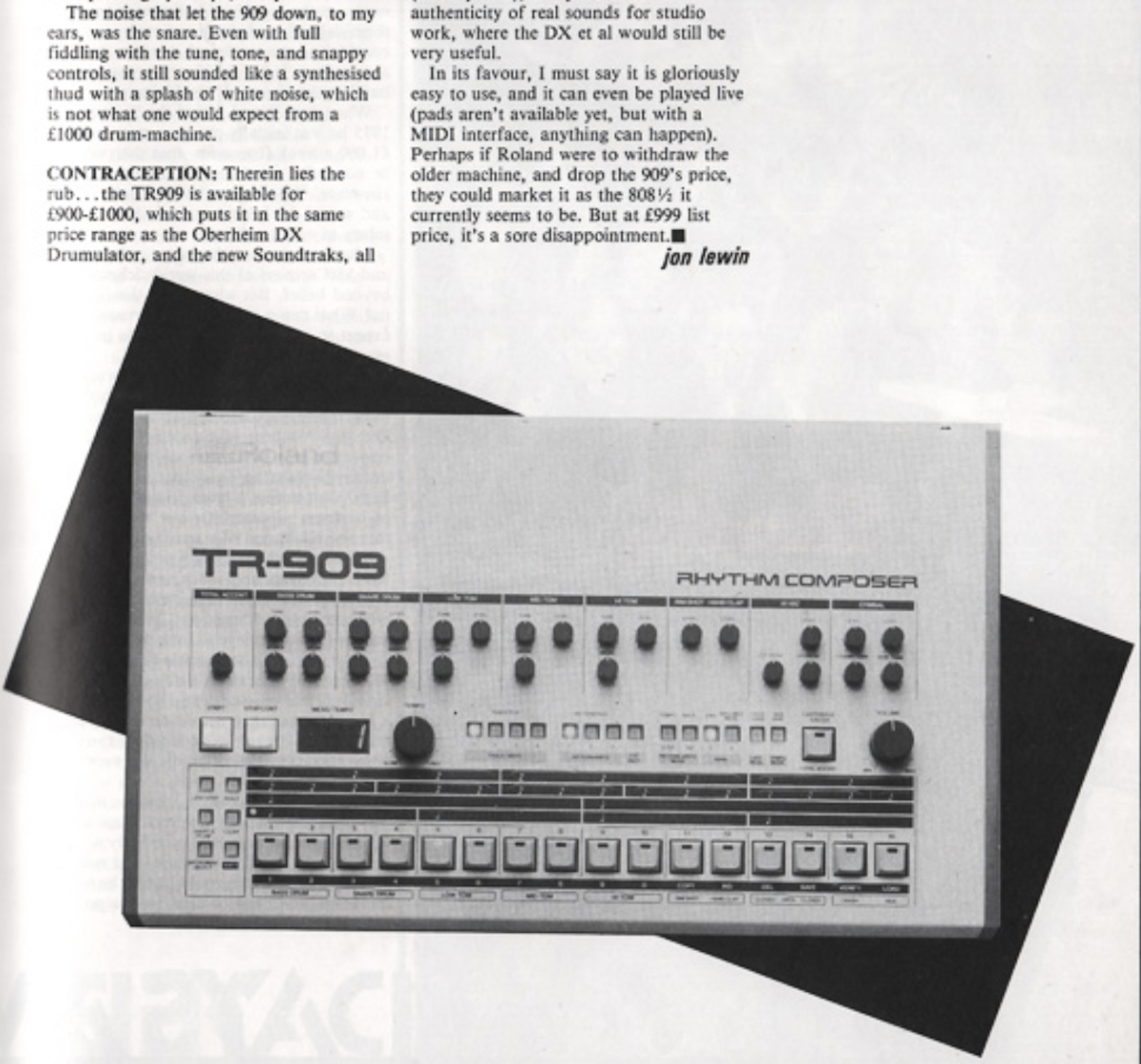
We'll start with Jon Lewin's review for a magazine called One Two Testing in April 1984.
"The TR-909 is a drum-machine, and it sounds like it. Apart from the cymbals, it uses little pieces of fiddly electrical stuff to make noises that sound like drums. It's not a Linn, nor even a Drumulator, and would not be mistaken for such, even by deaf persons.
This absence of a clear marketing policy could well turn this machine into Roland's first white elephant.
"That said, it does make a good noise. The bass drum can be made to move mountains. The noise that let the 909 down was the snare. Even with full fiddling with the tune, tone, and snappy controls, it still sounded like a synthesised thud with a splash of white noise, which is not what one would expect from a £1,000 drum machine.
"It certainly sounds less 'real', which is an audible deficiency. This absence of a clear marketing policy could well turn this machine into Roland's first white (well, pale grey plastic) elephant."
Jon did, then, correctly predict what would happen to the 909 in the short term, as it certainly didn't do the numbers that Roland wanted. It also sounds like it was being marketed as a kind of hybrid analogue/digital machine that was trying to produce 'real' sounds which (thankfully now) it didn't do well.
The review concludes: "Even with its wonderful 'state-of-the-art' micro-chippery, the TR-909 still sounds like a drum machine, instead of a machine playing drums. It seems too expensive for the majority of home users and drummer-less groups, and yet it lacks the authenticity of real sounds for studio work. At £999 list price, it's a sore disappointment."
If only you could get an original for £999 now. Current value? Between £4,000 and £6,000.
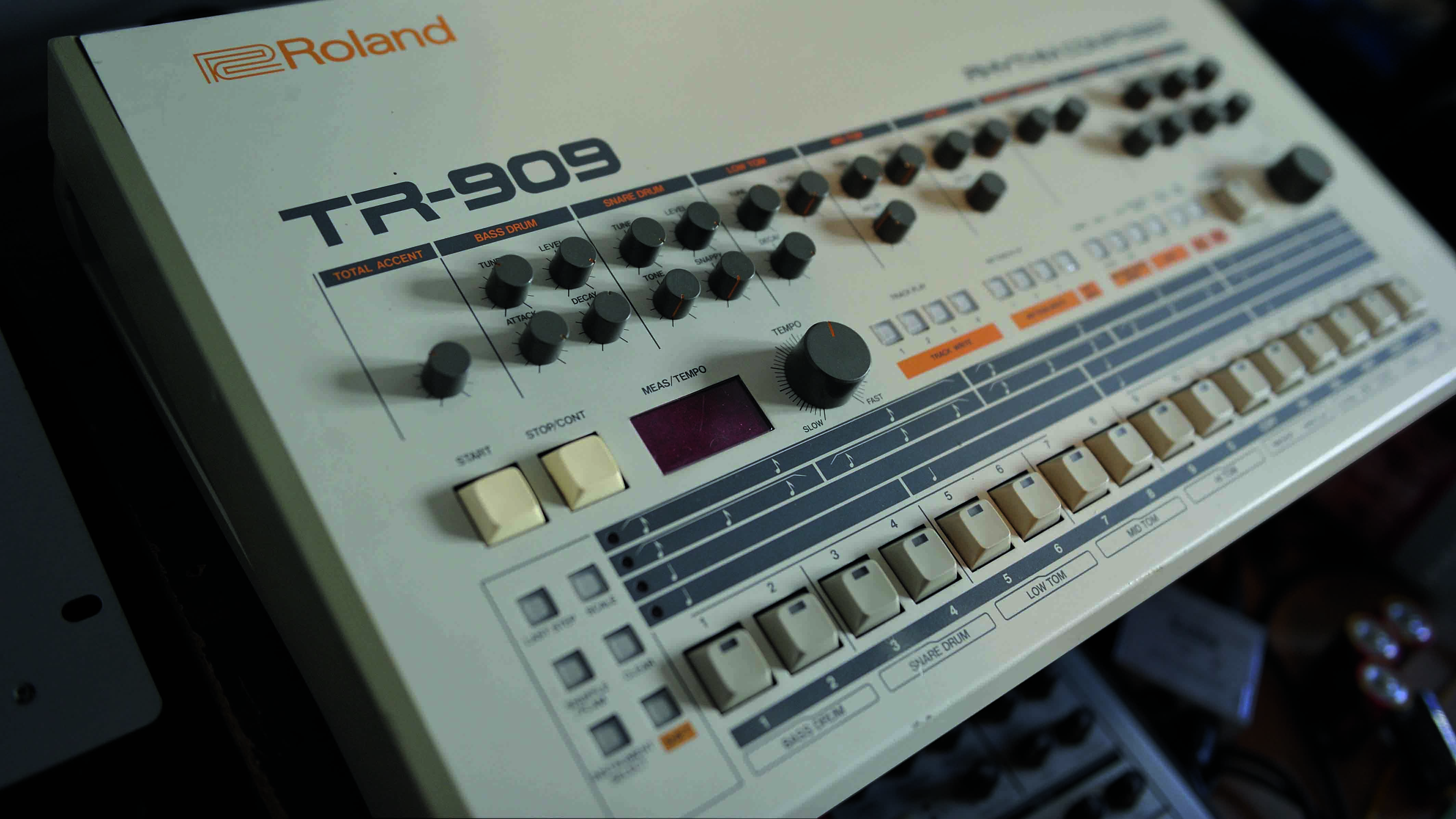
Now onto an Electronics & Music Maker review written by Dan Goldstein and Geoff Twigg from April 1984.
"The 909 uses digital sampling techniques for the generation of only two sounds - the crash and ride cymbals. By analogue standards, most of the sounds on offer are of extremely high quality, while not unexpectedly, the digital cymbals are also very usable.
"The 909's clap sound is well-nigh identical to that on the TR-808, which means it's one of the very best available, while the toms represent a considerable improvement over the earlier machine's.
"On the debit side, the 808's higher-pitched conga option is not carried forward to the dearer model, which is a shame. On the 808, the bass drum has user-variable tuning and decay, and in addition, the 909 goes one better by offering adjustable attack as well, though the effect of turning this control to maximum isn't particularly realistic or musical."
It's clear, then, that - back in the '80s before dance music changed everything - drum machines were supposed to replace drummers, and the 909 was simply not realistic enough.
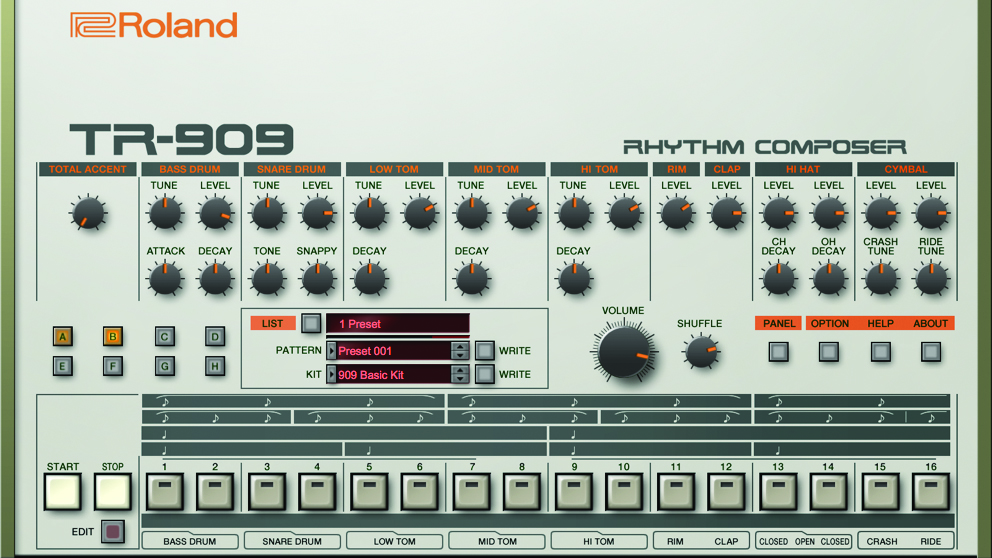
Meanwhile, a feature written by Roland for Electronic Soundmaker & Computer Music in June 1984 sheds some light on how the company had intended to market the machine.
"The TR-909 is the result of some very sober reflections in the R&D departments of Roland. The problem was to produce something that would produce the realism that only digital sounds can give cymbals and hi-hats, plus the control over drum sounds which analogue machines give but digital ones don't.
The problem was to produce something that would produce the realism that only digital sounds can give.
"The answer has been to use both. The cymbal sounds are digital and the rest are analogue. The TR-909 is likely to be used by professional musicians and studios to whom absolute control is paramount and who need MIDI versatility, large memory, and impeccable sound."
All told, these classic features give us a fascinating insight into the birth of a machine that would define a huge part of music production years after its release. The most interesting conclusion you could draw is that had the reviews been more positive and had the machine been more 'realistic', then the 909 would have been a more successful product.
Had that been the case, though, its price wouldn't have fallen, nor its beats been adopted by the skint producers of the time. Other machines would have been used instead, and the beats we are still enjoying today might well be very different.
Thank goodness the 909 was rubbish at 'real' drums, then - we're not quite sure how techno would have evolved with a Linn LM-1 or Oberheim DMX providing its backbone. And thanks to the critics who panned the best drum machine ever built, and for all the right reasons!


Andy has been writing about music production and technology for 30 years having started out on Music Technology magazine back in 1992. He has edited the magazines Future Music, Keyboard Review, MusicTech and Computer Music, which he helped launch back in 1998. He owns way too many synthesizers.
